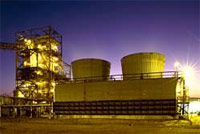
I recently mentored a Duke Graduate Engineering group in an Entrepreneurship Studies Class. The topic was
Torrefaction (this surprises you!).
These students developed a full blown business plan for a torrefaction mini-mill (regional plant) in North Carolina.
When the cost of the plant was $ 600/Ton hour of production, and there was a mix between initial equity and convertible debt ($ 3 Million), and $4 Million downstream debt their business plan calls for a 25 Million dollar revenue company generating 31% EBITDA by year 5 . I actually think that they grow the business too fast in the early years. It may be more capital efficient to take on less capital up front, grow a little more slowly until the intial units are generating cash, then use debt if you can get it, or higher priced equity later to ramp up the buisness quickly.
They assumed Green Credits starting at zero in year one, and ramping to $20 per ton over time, which is anyone's guess. They also did not do a sensitivity analysis to the carbon spread (the difference between the price of raw biomass and the displaced coal on a BTU basis), which is key to the analysis which I held out as an 'advanced assignment' if they had time. I will either do this analysis or have it commissioned and will post next on this issue).
But overall, it provided two really valuable things:
1) Another set of eyes and spreadsheets working independently on the analysis of the underlying business model.
2) Another business plan which independently tries to concisely communicate the value proposition, market and risks associated with torrefaction. (I ghost wrote a plan for another company to try and help them move forward -- so now that's two plans from which to draw from the future).
Torrefaction plants are one block in the value chain and a necessary part of the development of the industry.
The recent downdraft in coal prices in the US, coupled with a lack of green credits right now, has hampered the development of the industry in the US. Yet these business plans show that there is promise in the US, and explain why this industry is developing more quickly in Europe.
Next, I'm going to apply option pricing models (talk about geeky!) to determine the volatility weighted coal price at which torrefaction makes sense. The model is still most sensitive to carbon spreads. The notion would be that if an investor wanted to, they could build a plant and hedge against downdrafts in coal prices. Then the question is would it make economic sense when you put the cost of the hedge on top? Stay Tuned.
 Agri-Tech, a SC start-up that has licensed technology from NC State, today announced that it had reached an agreement with Kusters Zima Corporation to manufacturer torrifaction equipment under license.
Agri-Tech, a SC start-up that has licensed technology from NC State, today announced that it had reached an agreement with Kusters Zima Corporation to manufacturer torrifaction equipment under license.










